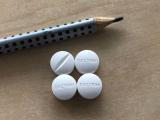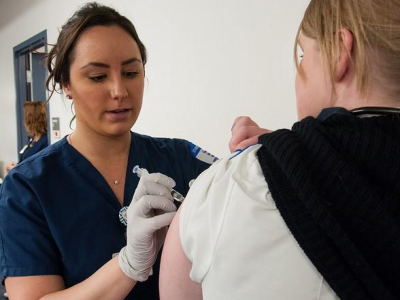A large cohort study conducted in Switzerland suggests that use of non–beta-lactam antibiotics before surgery should be avoided when possible, researchers reported late last week in JAMA Network Open.
The study of nearly 350,000 adults who were administered surgical antibiotic prophylaxis (SAP) before undergoing a major surgical procedure found that use of non–beta lactam antibiotics was associated with a nearly twofold increase in the surgical-site infection (SSI) rate compared with those who received SAP with beta-lactam antibiotics.
Beta-lactam antibiotics such as cefazolin and cefuroxime are the first-line choices for SAP for most surgical procedures to mitigate the risk of SSIs, which are a common complication following surgery and can extended hospitalizations, increase healthcare costs, and contribute to patient mortality. SSIs are estimated to occur in 1 in 30 surgical procedures.
Beta-lactams are recommended for SAP because of their broad-spectrum, bactericidal activity, and safety profile. Patients with self-reported or documented beta-lactam allergies, however, require alternative options. The study authors say their findings indicate that those patients should be carefully evaluated before SAP is administered.
Higher SSI rate across all surgical procedures
Using data from the Swissnoso SSI surveillance system, a team of Swiss researchers analyzed data on all patients who received SAP with either beta-lactam or non–beta lactam antibiotics at least 120 minutes before incision at 175 participating hospitals from 2009 through 2020. Patients who had undergone 1 of the 10 most frequent surgical procedures were included. The main outcome was occurrence of SSIs.
"The comparative effectiveness of non–β-lactam vs β-lactam SAP in preventing SSIs remains incompletely characterized," they wrote. "While β-lactam antibiotics are preferentially recommended, studies suggest that non–β-lactam alternatives may be associated with elevated SSI rates."
Of the 538,976 surveilled patients, 348,885 (median age, 63.2 years; 56.3% female) were included in the study. Of these patients, 342,936 (98.3%) received beta-lactam SAP and 5,949 (1.7%) received non–beta-lactam SAP. Patients who received beta-lactam SAP were given cefuroxime (75.1%) and cefazolin (24.9%), while patients who received non–beta-lactam SAP were given clindamycin (53.6%), ciprofloxacin (30.5%), and vancomycin (16%).
Of the 9,871 patients who were diagnosed as having SSIs, 9,507 (2.8%) were in the beta-lactam group and 364 (6.1%) in the non–beta-lactam group. The non–beta-lactam SAP group consistently had higher rates of superficial incisional infections (2.9% vs 1.0%), deep incisional infections (1.0% vs 0.4%), and organ-space infections (2.3% vs 1.3%).
After adjustments for institutional, patient, and perioperative confounding factors, non–beta-lactam SAP was significantly associated with a higher SSI rate (adjusted odds [aOR], 1.78) compared with beta-lactam SAP. The higher SSI rate was found across all surgical procedures.
A propensity score-based and matched analysis confirmed the higher SSI risk associated with non–beta-lactam SAP (aOR, 1.68). Secondary analyses found a higher risk of SSI for ciprofloxacin (aOR, 1.57), vancomycin (aOR, 1.38), and clindamycin (aOR, 2.12) compared with beta-lactam SAP.
Preoperative allergy testing recommended
The authors say the findings are consistent with a 2017 study that found a 50% increased likelihood of SSIs in patients with penicillin allergy who received alternative prophylactic antibiotics.
"Our study extends these findings, yielding more definitive results with a much larger sample size and direct comparison of β-lactam vs non–β-lactam prophylaxis, independent of allergy status," they wrote.
They add that since penicillin allergies are frequently unconfirmed, surgeons should test their patients before resorting to alternative antibiotics. While an estimated 10% to 15% of adults carry a beta-lactam allergy label, research has shown that up to 90% of those with the label may actually be beta-lactam tolerant.
The authors note that studies have shown that preoperative allergy testing reduces non–beta-lactam SAP.
"These findings, coupled with the increased SSI risk associated with non–β-lactam SAP, as confirmed by our study, should motivate preoperative testing in case of uncertain penicillin allergy," they concluded.






















